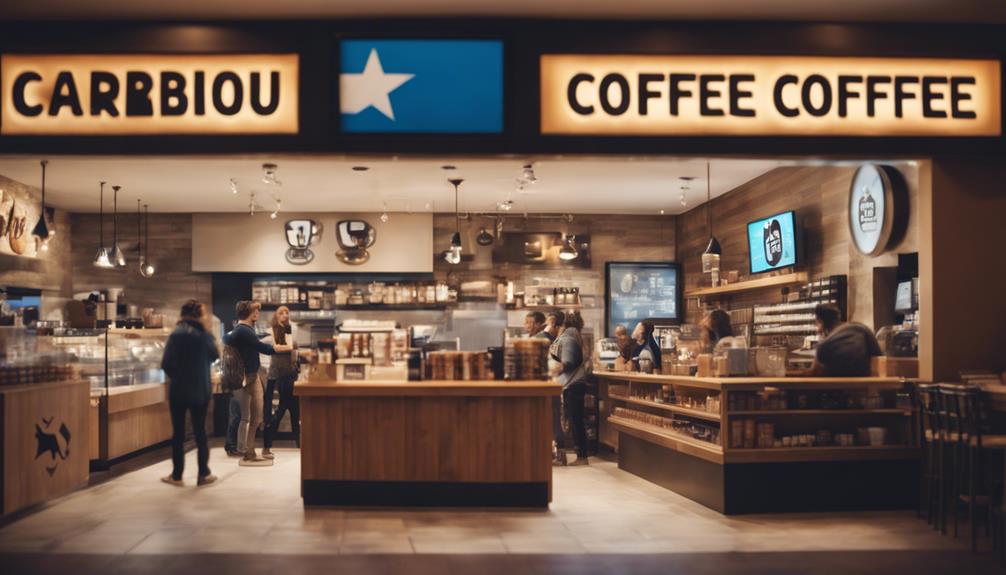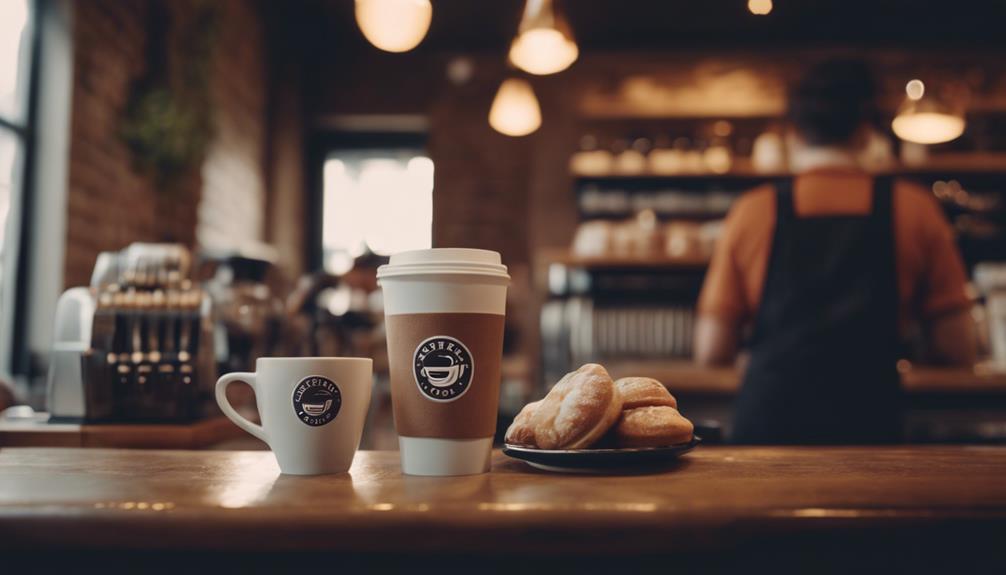Did you know that an impressive 86% of employees appreciate it when their bosses offer high quality coffee in the workplace? This statistic underscores the significance of having good coffee in keeping employees content and productive. Coffee has evolved from being just a beverage; it now plays a crucial role in our work lives, aiding in our performance. Research conducted by the National Institute of Health reveals that coffee can enhance cognitive functions, increase alertness, and boost morale. This demonstrates a clear connection between quality coffee and heightened employee efficiency.
Employers can take advantage of this by offering a variety of coffees from reliable sources like Yami Fresh. They have everything from classic coffees to cool cold brews. Good coffee not only makes everyone feel better but also helps create a positive work atmosphere. It shows the company cares about its employees’ happiness and health.
Key Takeaways
- 86% of employees appreciate access to quality coffee.
- Caffeine enhances cognitive performance and mood.
- Quality coffee can significantly improve employee morale.
- Diverse coffee options cater to varying employee preferences.
- Providing coffee demonstrates employer care for staff well-being.
- Quality coffee is linked to increased productivity in the workplace.
Importance of Coffee in the Workplace
Bringing coffee into the workplace has many benefits. It greatly improves focus and productivity among employees. High-quality coffee meets different tastes and helps create a lively coffee culture at work. It sets a positive mood for the day.
The coffee break is now a cozy moment for everyone. It encourages staff to meet and talk, boosting teamwork.
Coffee as a Daily Ritual
For many, making coffee is a cherished morning routine. It helps them mentally prepare and start the day calmly with their preferred drink. A lot of employees feel this ritual boosts their well-being at work.
Enhancing Focus and Concentration
Caffeine, found in coffee, effectively sharpens the mind. It wakes up the brain, reducing sleepiness. This leads to better alertness and concentration.
Studies show that coffee helps with memory and brain function over time. This results in higher productivity all day.
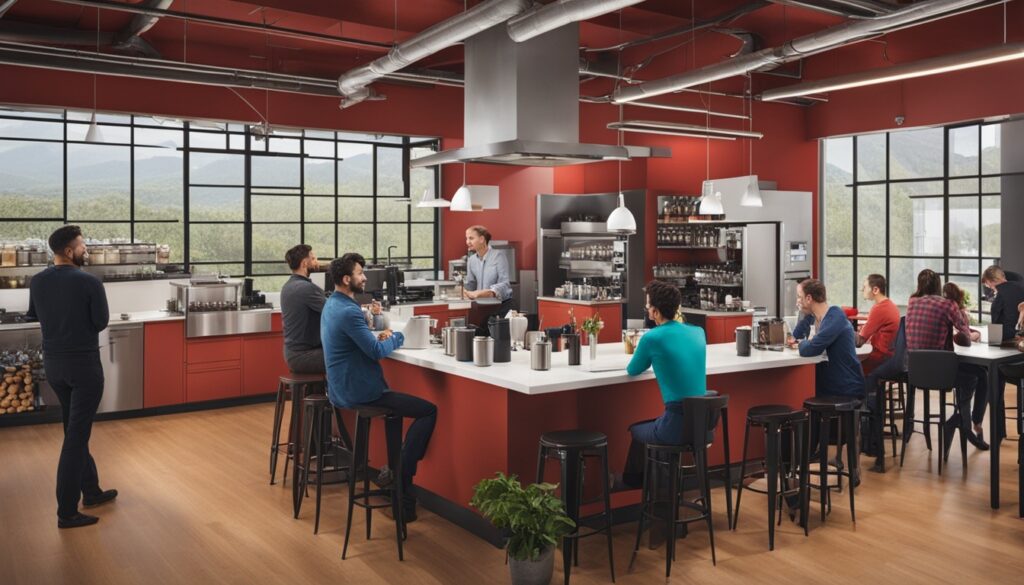
| Impact of Coffee on Employee Experience | Percentage of Employees |
|---|---|
| Consume coffee in the workplace | Approx. 80% |
| Increase in productivity after quality coffee | 20%+ |
| Experience enhanced mental alertness | 75% |
| Feel more engaged after socializing during breaks | 60% |
| Report increased motivation due to coffee | 50% |
The Impact of Quality Coffee on Employee Productivity and Satisfaction
Quality coffee is key in boosting productivity and happiness at work. It helps the mind and increases stamina. This makes the workplace better for achieving more and staying positive.
Cognitive Benefits of Caffeine
Caffeine makes our minds sharper, helping us do better at work. A survey by the National Coffee Association showed that 46% of employees feel more productive with coffee. Coffee increases memory, focus, and quick thinking. Drinking it regularly improves work performance, making tasks easier and more focused.
Reducing Fatigue and Increasing Stamina
Good coffee fights tiredness, keeping energy up all day. It keeps employees active and involved. Coffee made from fresh beans tastes and smells better, which boosts alertness and work drive.
37% of workers say coffee boosts their mood. Quality coffee helps maintain high energy and encouragement. This leads to more work getting done.

Boosting Employee Morale through Coffee
Having quality coffee at work is a great way to lift everyone’s spirits. It helps make the workplace welcoming. A good cup of coffee makes teams happier and healthier.
Creating a Positive Work Environment
Great coffee shows employees they are valued. About 65% expect good coffee in the office. A coffee station encourages friendship among coworkers.
Up to 92% of workers want places like coffee lounges to meet and work together. This makes the office a better place.
Quality Coffee as an Employee Perk
Good coffee shows employers care. Most workers, 54%, have their coffee mainly at work. It’s important for companies to have good coffee options.
For instance, the Aguila machine can make 200 coffees an hour. This suits busy workplaces. Also, 77% think coffee breaks are very important.
This focus on quality coffee can make workers happier. It may even help them do better at their jobs and stay longer with the company.

| Statistic | Percentage |
|---|---|
| Employees expecting high-quality coffee | 65% |
| Employees who agree coffee breaks are important | 77% |
| Employees wanting social spaces in the office | 92% |
| Workers who drink coffee most at work | 54% |
Putting money into good coffee boosts morale and creates a positive, engaging workplace. Employers that offer coffee perks can keep their workers happy and inspire them. This is good for everyone.
The Role of Coffee Breaks in Employee Engagement
Coffee breaks are key for improving employee engagement. They refresh the mind and help people connect. When staff members have coffee together, they build better work relationships. This improves how well they work together.
Fostering Social Connections
Coffee breaks let employees form stronger bonds. Talking over coffee helps people connect personally. This makes for a stronger team. About 26% of workers drink coffee to chat with colleagues. These chats boost morale and make people feel like they belong.
Encouraging Collaboration and Teamwork
Coffee breaks boost collaboration. They let employees talk about more than just work. This relaxed time leads to brainstorming and sharing ideas. It makes teams work better. Studies show that 67% of workers have coffee at work. Of them, 40% use these breaks to rest from work. This leads to new ideas and better productivity.
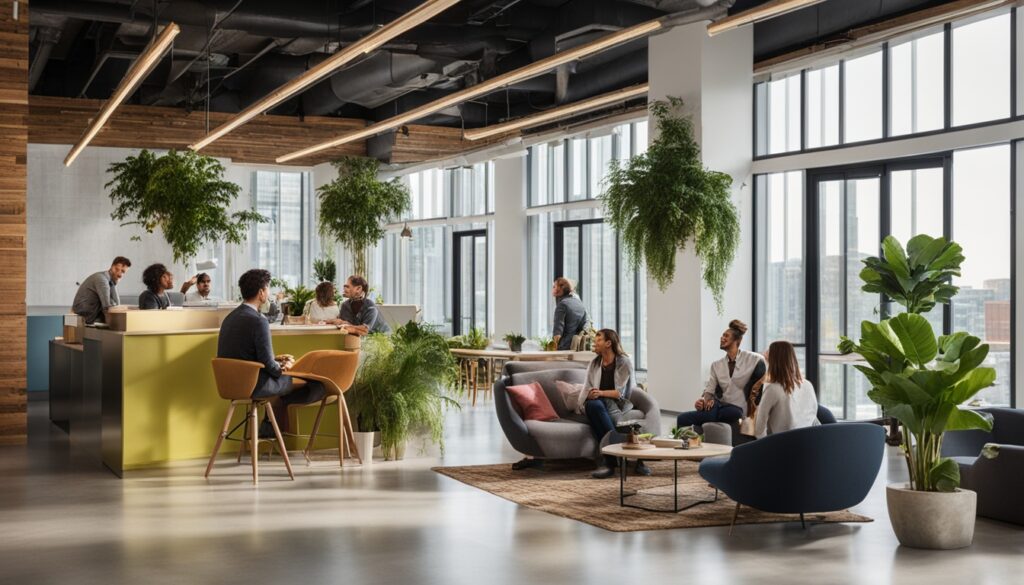
| Employee Coffee Habits | Percentage of Workers (%) |
|---|---|
| Workers who drink coffee at work | 67 |
| Workers drinking coffee to take a break | 40 |
| Workers drinking coffee to chat with colleagues | 26 |
| Employees feeling valued by high-quality coffee | 71 |
| Employees believing high-quality coffee improves daily work life | 63 |
| Employees motivated by coffee at work | 89 |
Choosing the Right Coffee Solutions for the Workplace
Finding the right workplace coffee solutions can boost employee happiness and work rate. Coffee helps create a positive vibe at work. That’s why it’s key to have great machines and lots of choices.
Investing in Bean to Cup Coffee Machines
Bean to cup coffee machines are perfect for offices that want fresh, quality coffee. They grind beans right when you want a cup, giving a taste boost that can lift spirits. A McKinsey & Company study found that 85% of workers say good coffee makes them more productive. These machines work well for teams of 45 to 100 people.
Offering a Variety of Coffee Options
Having lots of coffee choices meets everyone’s tastes. It makes the office a nicer place, with varied flavors and brews keeping things interesting. Over 80% of workers in the U.S. drink coffee while they work, showing the need for variety. Giving people what they like can make them happier and more effective at their jobs.
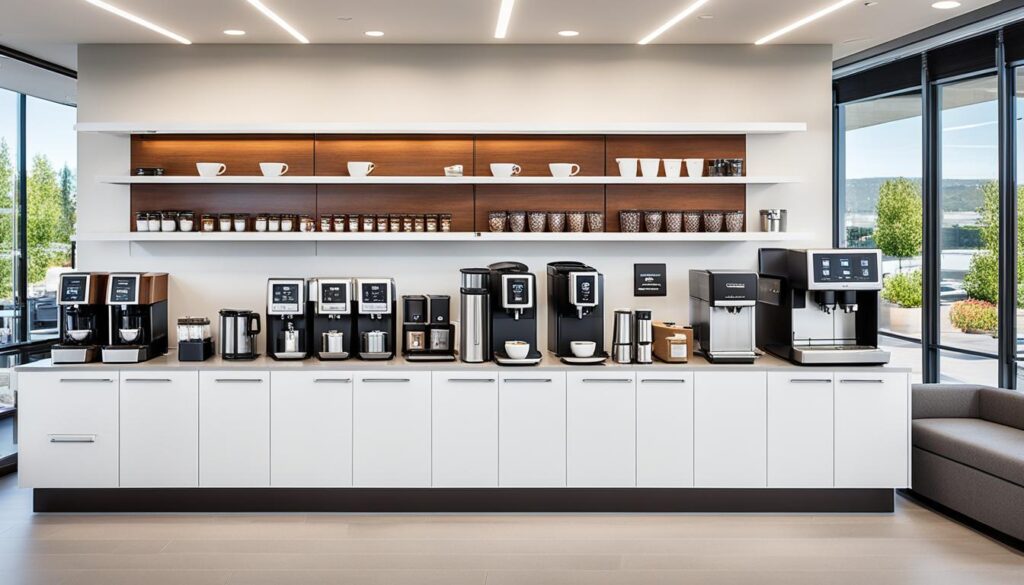
| Type of Coffee Machine | Cups Per Hour | Suitable for Employees | Whole Bean Types Supported |
|---|---|---|---|
| Single-Serve Machine | Up to 50 | Up to 50 | N/A |
| Larger Models | More than 50 | More than 50 | N/A |
| Airpot Machine | Up to 80 | Various | N/A |
| Large-Volume Thermal Brewer | Up to 300 | High traffic | N/A |
| Bean to Cup Machine | Varies | 45-100 | 2-3 |
Choosing the right coffee solutions is about more than coffee; it makes the workplace better. Good coffee machines and a variety of options make employees happier and more productive. The right setup refreshes and helps workers interact too.
Practical Tips for Providing Quality Coffee
Bringing coffee culture to the workplace is more than just having coffee. It’s about ensuring everyone gets quality coffee. This means thinking about how everyone can get to the coffee and choosing coffee that’s good for our planet. By doing so, companies can make their employees happier and more productive.
Ensuring Accessibility for Employees
It’s important for employees to easily get to the coffee stations. Having coffee machines in common areas helps people connect more. This setup not only makes the workplace better but also encourages teamwork and chatting. Easy access to good coffee makes employees more satisfied and motivated during their day.
Promoting Sustainability in Coffee Choices
Choosing coffee that’s good for the earth is important to employees who care about the planet. It shows the company cares about important issues, improving how people see the brand. This approach makes employees happier and supports the fight against climate change. Seeing their company care about the planet makes employees feel good about where they work, lifting their spirits.
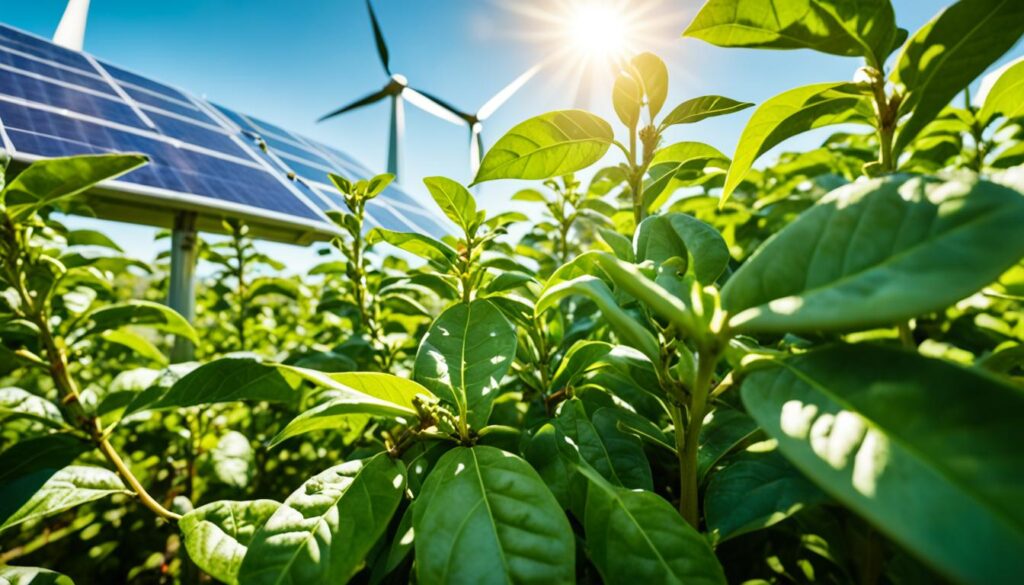
Employee Satisfaction and Coffee Preferences
Knowing what kinds of employee coffee preferences there are at work is key to making everyone happy. By providing different coffee options, employees feel more fulfilled. This approach towards coffee personalization makes each person feel important, which makes the workplace better.
Personalization of Coffee Choices
Different coffee styles let employees enjoy their coffee their way. Studies show that having premium coffee boosts happiness by 25%. Also, access to good coffee can make people work 20% more efficiently. This shows how coffee personalization plays a big part in keeping employees engaged and satisfied.
Understanding Employees’ Coffee Culture
It’s crucial to know the role coffee plays in your company. For many, it’s a way to connect and share ideas, making work more creative and collaborative. A survey found that 80% of workers think the coffee their employer provides affects how happy they are at work. By getting this right, companies can improve team spirit and keep everyone motivated.

Conclusion
Having good coffee at work is key for boosting employee productivity and happiness. About 65 percent of employees drink coffee while working. This shows that coffee is now a crucial part of office life.
The average worker drinks three cups a day. Nearly 40 percent say they couldn’t get through the workday without it. This shows how important coffee is for their focus and energy, helping them work better.
Good coffee does more than just please individuals; it helps people connect. It improves teamwork and the overall mood. Around two in five office coffee drinkers say it leads to productive chats.
This coffee time helps with team bonding and builds a stronger work community. Companies that offer quality coffee stand out. They keep employees happy and keep good workers around.
So, investing in good coffee is not just about making the workplace nicer. It’s a smart choice that boosts work and team spirit. Employers should focus on good coffee to keep their teams focused, energetic, and happy.


